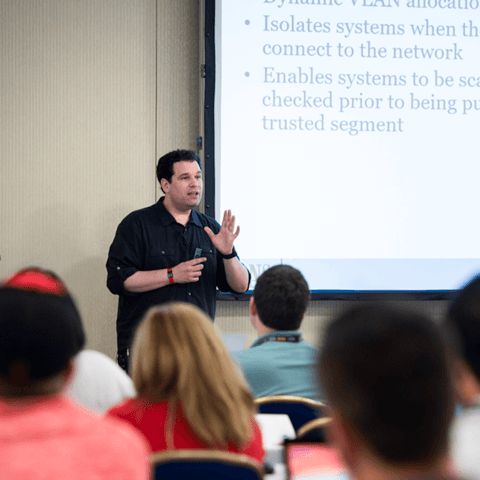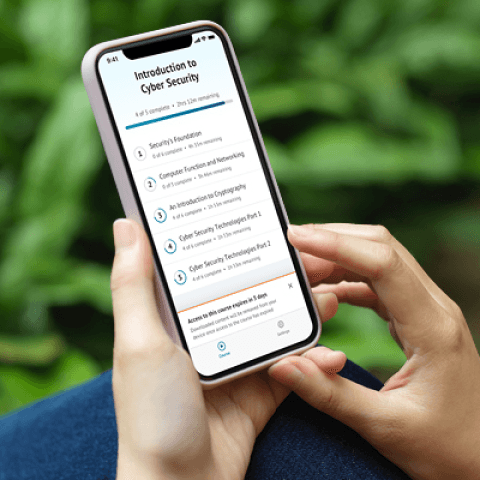SEC595: Applied Data Science and AI/Machine Learning for Cybersecurity Professionals


Experience SANS training through course previews.
Learn MoreLet us help.
Contact usBecome a member for instant access to our free resources.
Sign UpWe're here to help.
Contact Us
Apply your credits to renew your certifications
Train from anywhere. Attend a live instructor-led course remotely or train on your time over 4 months.
Apply what you learn with hands-on exercises and labs
Develop a comprehensive roadmap for cloud security, enhancing your organization's security posture while supporting business transformation and cloud adoption.
This type of training, i.e., cloud security from a management perspective, is rare and the quality of this one is definitely amazing.
LDR520: Cloud Security for Leaders equips security leaders, IT executives, and aspiring cloud security professionals with the critical knowledge they need to develop and implement robust cloud security strategies in today's high-risk environment. This course provides essential frameworks for creating an effective cloud security roadmap and deploying security capabilities across the enterprise, including a practical security maturity model. Mastering the technical aspects, processes, and people-dimensions of cloud environments, leaders will learn to make strategic security decisions that protect organizations and enable innovation. 12 hands-on Cyber42 leadership simulation exercises and a comprehensive capstone project build confidence and practical skills to lead business-oriented cloud security initiatives. Graduates will implement best practices tailored to their organization's specific needs, bridging technical security requirements with organizational transformation goals.


Jason is a leading consultant sought after by Global 500 companies across finance, healthcare, and technology sectors worldwide. Over the years, he has led intrusion detection, penetration testing, defense improvement programs, and incident response.
Read more about Jason LamExplore the course syllabus below to view the full range of topics covered in LDR520: Cloud Security for Leaders.
The first section develops foundational knowledge of cloud adoption models and understanding of Identity and Access Management (IAM), one of the most critical security domains in cloud security.
This section addresses how to manage cloud technology security, highlighting differences from on-premises environments and teaching critical capabilities and competencies.
This section explores three key cloud security domains: data asset protection, security detection and response, and governance aspects of cloud security.
This section teaches students to secure applications in cloud environments, enabling security assurance mechanisms and workforce transformations to support cloud security initiatives.
This section addresses multi-cloud strategy and Software-as-a-Service (SaaS) security management, culminating in a capstone exercise giving students the opportunity to apply all concepts and skills learned throughout the course.
Developing cloud security roadmaps, plans and procurement models that define policy and procedure
Explore learning pathResponsible for overseeing and directly managing technology projects. Ensures cybersecurity is built into projects to protect the organization’s critical infrastructure and assets, reduce risk, and meet organizational goals. Tracks and communicates project status and demonstrates project value to the organization.
Explore learning pathDaily focus is on the leadership of technical teams. Includes titles such as Technical Director, Manager, and Team Lead.
Explore learning pathResponsible for managing the cybersecurity of a program, organization, system, or enclave.
Explore learning pathDaily focus is on the leadership of technical teams. Includes titles such as Technical Director, Manager, and Team Lead.
Explore learning pathDesigning the adoption of cloud services and define the tools and strategy for cloud solutions
Explore learning pathThis role conducts supervises, manages and leads cybersecurity teams and work. Find the SANS courses that map to the Leadership SCyWF Work Role.
Explore learning pathResponsible for leading, coordinating, and the overall success of a defined program. Includes communicating about the program and ensuring alignment with agency or organizational priorities.
Explore learning pathWhen purchasing a live, instructor-led course, add 4 months of online access. View price in the info icons below.
Add 6 months of hands-on skills practice. Add to your cart when purchasing your course.
Great course, a lot of material to go through but it really shows the model an organization should follow to increase the security on cloud environments.
The game platform [Cyber42] and challenges are really interesting and add a nice dimension to the class.
Perfect for understanding the inner workings without getting too in the weeds.
Great way to break out of just the technical aspects of cloud and a step towards management level learning.

Get feedback from the world’s best cybersecurity experts and instructors

Choose how you want to learn - online, on demand, or at our live in-person training events

Get access to our range of industry-leading courses and resources